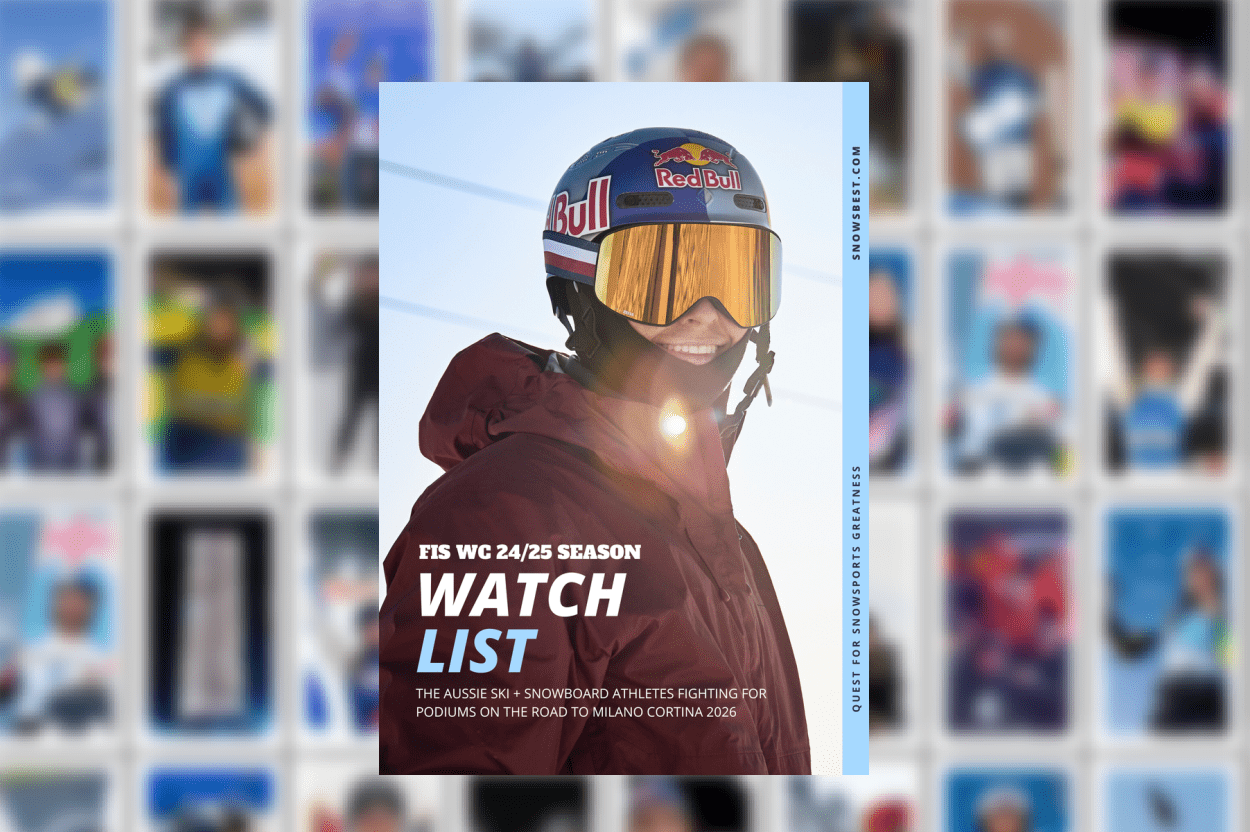What’s with all the skiers and boarders ‘getting lost’ and needing rescue this season? Sam pullos reveals tips to save your snow life should you stray off the piste and into trouble.
As powder skiing has exploded in popularity and backcountry terrain has become more accessible, the danger of being stranded in the mountains has increased. Every year, dedicated ski patrol teams are tasked with conducting search and rescue missions for skiers and boarders lost in their own search for the perfect line and deep mountain pow stashes.
The knowledge, experience and dedication of resort patrol teams and state emergency services is reflected in the work they do. But many of the actions that facilitate successful rescues rest with those in need of rescue. So, what leads to snow lovers getting lost and what can you do once you are lost to increase your chances of survival and rescue?

As it turns out, the reasons for people getting lost are fairly simple. They don’t know where they’re going.
“A lack of preparedness combined with insufficient knowledge of the area are the primary causes of disorientation” says Drew Kneeland, Jackson Hole’s Ski Patrol Director.
Exacerbating the problem has been the rapid development of equipment; powder skis, adaptive bindings etc. President of the National Ski Areas Association, Michael Berry attributes growing numbers of standard skiers to these gear developments. Armed with this new gear, the general public can more easily access areas that only the very best could traditionally get to. Unfortunately, ability, knowledge and experience have not caught up with skier’s now almost universal access to heavy terrain.
Similarly, the more skier/boarders experience the joys of powder skiing, the more they want. Hell, that’s the reason we fly half way around the world, right? The problem is that the allure of powder can be the ultimate Siren song. And don’t be fooled, experienced skiers and riders aren’t immune.
On the 23rd of January this year, two skiers spent 52 hours lost at Moarch Mountain, Colorado. Both were instructors and very capable skiers. The pair were out searching for powder when they discovered what looked like a grin-inducing stash. Neither were very familiar with the area but decided to go for it.
Instead of cheery laughs and a cold beer at the bottom, the two shared a 52 hour survival test before being rescued. They were fortunate, they escaped with their lives and some of the worst frostbite ski patrol had ever seen.
Whilst harrowing, this story is far from the exception. Sun Peaks, Heavenly, Jackson Hole, Mt. Baker, Cypress Mountain, Killington to name just a few have all had to conduct search and rescue missions this season.
Most of these stories share a common theme; riders out looking for powder in areas they are not familiar with and conditions they are unprepared for. Backcountry rescues at Killington Mountain in Vermont have gotten so numerous that the mountain has recently opened 745 acres of new, un-groomed terrain to try and lure skiers and boarders in a safer direction.
Still, the untracked deep snow that covers the backside of the mountain proves too much of a temptation for some. This bowl leads to a completely unmarked forrest and no clear way back to populated areas. Of course, if you are a traveling rider or new to the area, you don’t know that. So the problems begin.
Lost at what cost?
The cost of getting stranded in the mountains can be high. Tragically, a life is often the price of one bad decision, other times it is fingers and toes. There are also considerable economic costs; rescue missions are expensive.
President of Bolton Valley ski resort, George Potter recently shed some light on the cost associated with rescue missions after a recent, fairly simple rescue.
Large Snow Grooming machine – $165/hour
Small Snow Grooming machine – $85/hour
Snowmobile – $45/hour
Individual rescue personnel – $30/hour
The involvement of state rescue teams brings additional costs, however these are generally worked in to an annual state budget. Vermont averages $51,000 in additional costs for search and rescue personnel alone.

In North America, search and rescue costs are generally absorbed by the resorts themselves however, a growing number of rescues is prompting discussions about charging those needing rescue. Jay Peaks resort recently charged a couple of skiers $1000 each for their rescue, covering about 75% of rescue costs. Whilst this is not the norm, skiing overseas is a different story.
Unlike in North America, the cost of search and rescue in Japan falls solely on the missing person/s and their family. In a recent case at Hakuba on Japan’s South Island, a family payed $600 per searcher, per day. With 14 search and rescue personnel working on the mission, rescue efforts were costing the family $8,400 per day. It is unclear whether or not this covers the cost of machine operations like helicopters and snowmobiles. Tragically, the lost skier perished in an avalanche and rescue efforts could not save his life.
What to do when you find yourself lost
Jackson Hole’s Ski Patrol Director, Drew Kneeland, offers his tips on not getting lost in the first place, how to be prepared and what to do if you are lost. As he says “These things are often common sense and easy to employ, but regularly overlooked.”
Know the terrain
Firstly, being familiar with the terrain you will be traveling through is imperative. If you do not know the area, you should be skiing with a group who does or not going there at all.
A pack, a partner and a plan.
When leaving the resort it is advised you always have the proper equipment, knowledge in how to use that equipment, a partner and a plan. make sure you have avalanche tools – Beacon, shovel & probe at a minimum AND that you know how to use them. Snow shoes will also help you to hike out of steep and deep snow areas.
Do you have food, water, fire-making capabilities, a first aid kit and additional functional clothing? With the exception of the first two, you may never need to use these things. Carrying them though could save your life.
Whether skiing in bounds, side country or backcountry, ride with a partner. If you are struck by an avalanche, caught in a SIS (Snow Immersion Suffocation) Hazard or are incapacitated in any way, you’re gear won’t save you, but it will help your partner save you!
When skiing the backcountry, it is vital to know the terrain you will be traveling through and let someone who is not going with you know what your planned route is. You can have fantastic survival skills but if ski patrol have no idea where to look for you, you’re in trouble.
Respect the situation you are getting into
People all too often think that help is just a phone call away. Cell reception in backcountry areas is very limited, phones die quickly in the cold and even if you do contact patrol, the dispatch of rescuers depends on the stability of conditions. It is important to comprehend and respect the remoteness of your future situation.
Know the weather before you go
An up to date knowledge of weather conditions and predictions will not only lower your chances of getting lost, but greatly increase the probability of surviving such an ordeal. If there’s a storm in the forecast, then stay home.
Survival Skills
Staying put will greatly increase your chances of being found. To stay in one place, you need shelter. Building an effective snow cave has been key to the survival of many who were rescued around the resorts listed earlier.
Fire up
This will not only help you keep warm but is an effective signal for rescuers. You can also melt snow to drink, but do not to eat it for hydration. Whilst tempting, eating snow in a survival situation can rapidly decrease your core temperature, hastening the onset of hypothermia and actually worsening dehydration.
Signal
Create a signal in the snow – dig shallow trenches and fill them with branches/leaves/foliage. This will be highly visible against the snow.
Stay Calm
Breathing deeply and slowly will help
Spending time in the mountains can be extraordinarily rewarding. The challenge, discovery, camaraderie and pure joy of carving down an unexplored and untouched powder face or glade keep skiers and boarders coming back day after day, year after year.
Go, explore but be safe and prepare for the worst so that when the time comes, you don’t have to experience it.

































